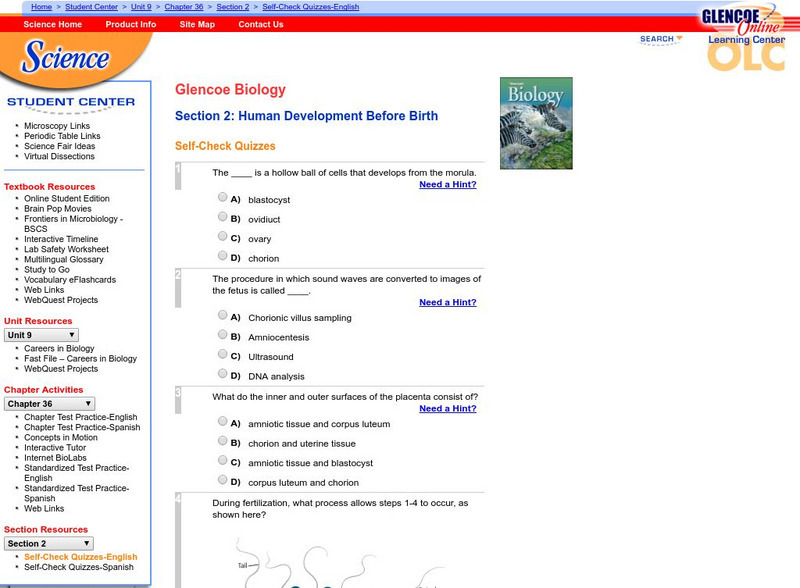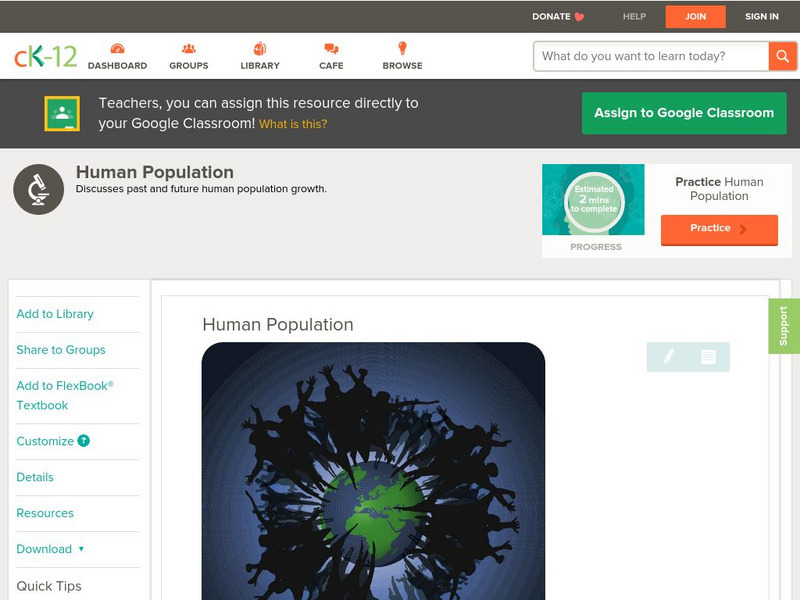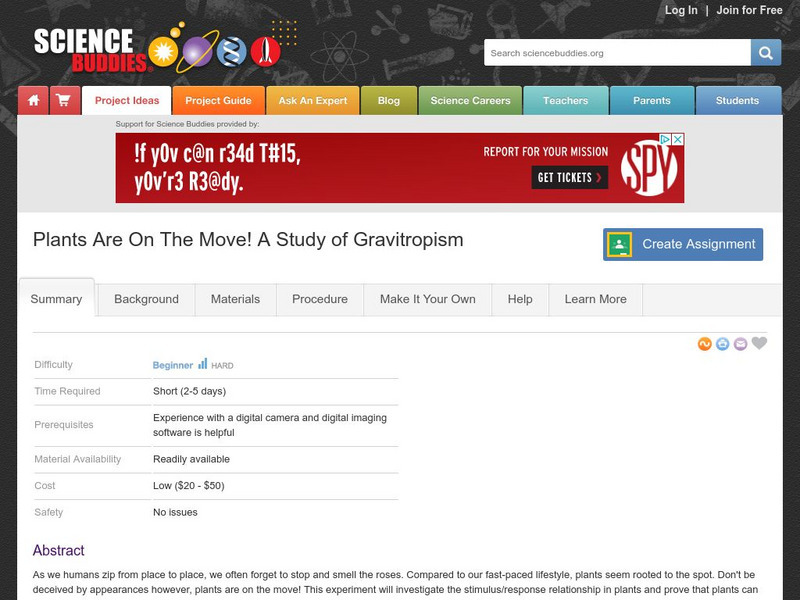Hi, what do you want to do?
Curated OER
Water: Where in the Watershed?
Students become connected to their watershed by exploring a local water body and mapping its features. They focus on how the local watershed fits into the larger scheme of the watershed.
Curated OER
Frogs Losing Ground
Students explore an exhibit through an interactive program on frogs. They can listen to the different sounds frogs make and the different types of frogs. They search for the types of frogs they find in their local area.
Curated OER
A Hard Sell on Stem Cells?
Students examine their prior knowledge of cell regeneration and therapeutic use of stem cells. After reading an article, they discover new techniques for deriving embryonic stem cells. In groups, they research on the different types of...
Curated OER
The Use of Myths in Science
Learners are told stories, myths and legend to explain their world. After telling the tales and discussion them, students are assigned to write a myth that describes a familiar situation, such as why the school garbage cans are always...
Curated OER
Thumbs Up, Thumbs Down: Grasping the Idea of Evolution
Students compare and their performance of a series of tasks using their thumb and fingers to their performance of the same tasks without the use of their thumb. The class discussion that follows the activity defines and discusses the...
Curated OER
The Use of Myths in Science
Students examine folk tales to determine the basis for scientific myths. They demonstrate through the discussion of the folk tales that the perception of the world has changed as new information is gained. They write their own folk...
Curated OER
Superhumans & Bionics; Electronic Eyes
Students examine the anatomy of the eye and the physiology of vision. Students participate in a modeling activity to demonstrate the difference between a healthy eye and an eye affected by macular degeneration. Students match part of...
Curated OER
Seeing in 3D: Interpreting Two-Dimensional Diagrams of Three-Dimensional Objects
Students hone in on their skills at reading diagrams. In this dimensional instructional activity students collect information on the functions of organs then figure out how all the parts work together.
McGraw Hill
Glencoe Biology: Human Development Before Birth: Self Check Quiz
This multiple-choice quiz on human fetal development allows students to get hints for each question and check their answers after submitting.
Untamed Science
Untamed Science: Biology: Human Biology: Endocrine System
Read and watch a series of videos on how our bodies regulate mood, growth, and development with complex chemicals.
CK-12 Foundation
Ck 12: Biology: Fetus Growth and Development
[Free Registration/Login may be required to access all resource tools.] Covers major events in the growth and development of the fetus.
Science Buddies
Science Buddies: Project Ideas: Delayed Gratification
In this human behavior science fair project, learn about delayed gratification. The Science Buddies project ideas are set up consistently beginning with an abstract, objective, and introduction, followed by a section on terms, concepts,...
CK-12 Foundation
Ck 12: Biology: Development From Birth to Adulthood
[Free Registration/Login may be required to access all resource tools.] Covers milestones in growth and development from birth to adulthood.
CK-12 Foundation
Ck 12: Life Science: Human Population
[Free Registration/Login may be required to access all resource tools.] How quickly is the human population growing? If we look at worldwide human population growth from 10,000 BCE through to today, our growth looks like exponential...
McGraw Hill
Glencoe Biology: Birth, Growth, and Aging: Self Check Quiz
Try these five multiple-choice questions about birth, growth, and aging. Each question has a clickable hint prompt as well as a self-checking feature.
CK-12 Foundation
Ck 12: Life Science: Human Egg Cells
[Free Registration/Login may be required to access all resource tools.] When a baby girl is born, her ovaries contain all of the eggs they will ever produce. But these eggs are not fully developed. They develop only after she starts...
Khan Academy
Khan Academy: Introduction to Development
How does an organism go from a single cell to something as complex as a frog, fly, or human being? Learn the basic principles of development.
BiologyWise
Biology Wise: Human Evolution: History, Timeline, Future Predictions
The history of human evolution is described, from the first aquatic animals that developed the ability to walk on land and the pivotal organisms from then up to the present day. The author then goes on to make interesting predictions...
CK-12 Foundation
Ck 12: Biology: Male Reproductive System Study Guide
Review the structure and function of the human male reproductive system.
CK-12 Foundation
Ck 12: Life Science: Infancy and Childhood
[Free Registration/Login may be required to access all resource tools.] The first year after birth is called infancy. Infancy is a period when the baby grows very fast. During infancy, the baby doubles in length and triples in weight....
Other
Biology Guide: Human Life Span
Students learn about the human life-span. Some topics investigated in the tutorial are reproduction, nervous system, skeletal muscle, and homeostasis.
Science Buddies
Science Buddies: It's Crowded in Here! A Study of Plant Population Density
Like humans, plants can be negatively affected by overcrowding. Unlike humans, plants cannot get up and move to a new environment or explore how to utilize new resources. This experiment will explore the effects of crowding (population...
Science Buddies
Science Buddies: Now You See It, Now You Don't! Test Your Peripheral Vision
The survival of our ancient ancestors depended on their ability to use peripheral vision to find prey and to avoid predators. Almost everything we do-from riding a bike, to dribbling a basketball, to reading a book-depends on peripheral...
Science Buddies
Science Buddies: Plants Are on the Move! A Study of Gravitropism
As we humans zip from place to place, we often forget to stop and smell the roses. Compared to our fast-paced lifestyle, plants seem rooted to the spot. Don't be deceived by appearances however, plants are on the move. This experiment...




























